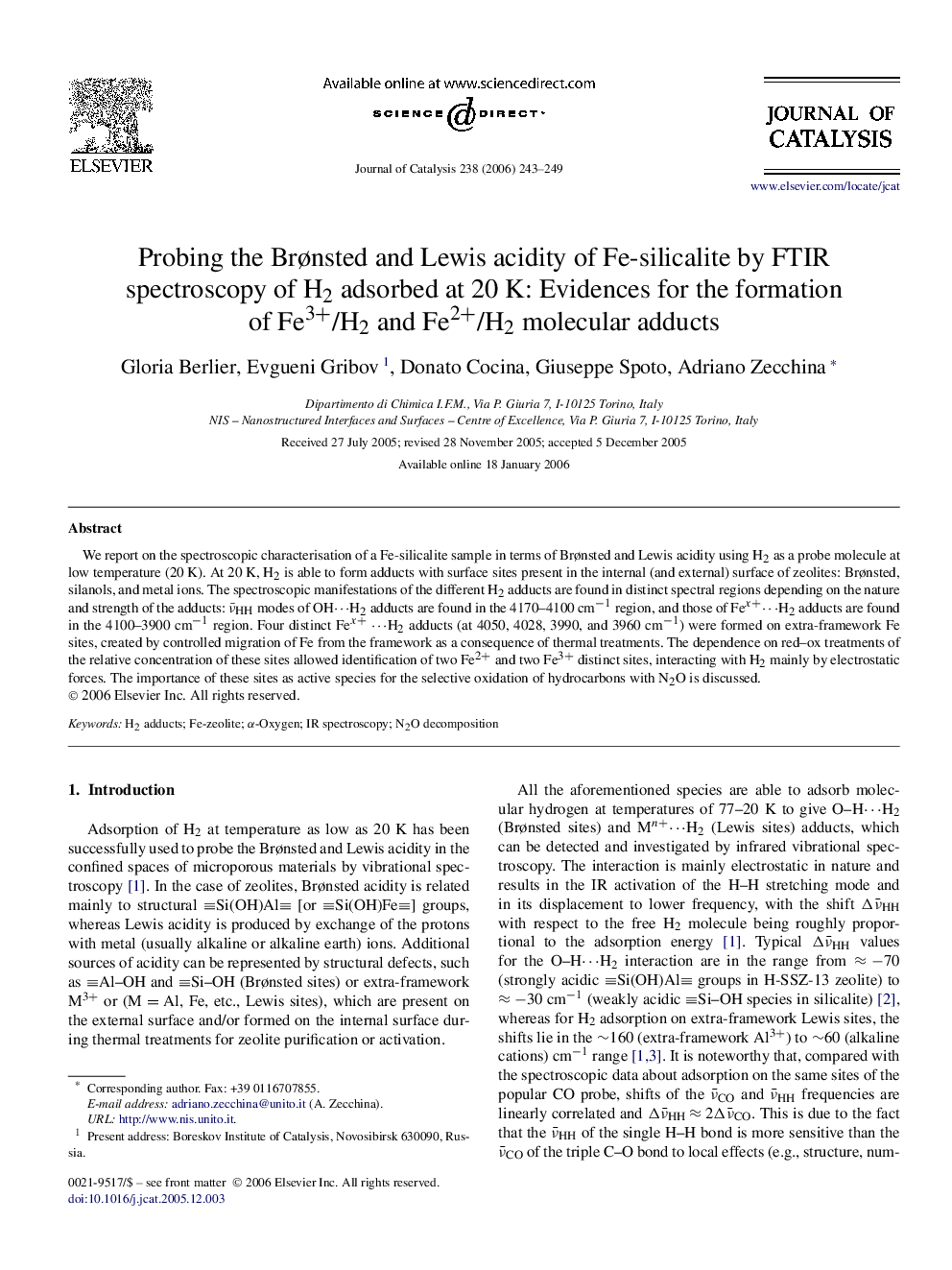| Article ID | Journal | Published Year | Pages | File Type |
|---|---|---|---|---|
| 63211 | Journal of Catalysis | 2006 | 7 Pages |
We report on the spectroscopic characterisation of a Fe-silicalite sample in terms of Brønsted and Lewis acidity using H2 as a probe molecule at low temperature (20 K). At 20 K, H2 is able to form adducts with surface sites present in the internal (and external) surface of zeolites: Brønsted, silanols, and metal ions. The spectroscopic manifestations of the different H2 adducts are found in distinct spectral regions depending on the nature and strength of the adducts: ν¯HH modes of OH⋯H2 adducts are found in the 4170–4100 cm−1 region, and those of Fex+⋯H2 adducts are found in the 4100–3900 cm−1 region. Four distinct Fex+ ⋯H2 adducts (at 4050, 4028, 3990, and 3960 cm−1) were formed on extra-framework Fe sites, created by controlled migration of Fe from the framework as a consequence of thermal treatments. The dependence on red–ox treatments of the relative concentration of these sites allowed identification of two Fe2+ and two Fe3+ distinct sites, interacting with H2 mainly by electrostatic forces. The importance of these sites as active species for the selective oxidation of hydrocarbons with N2O is discussed.
